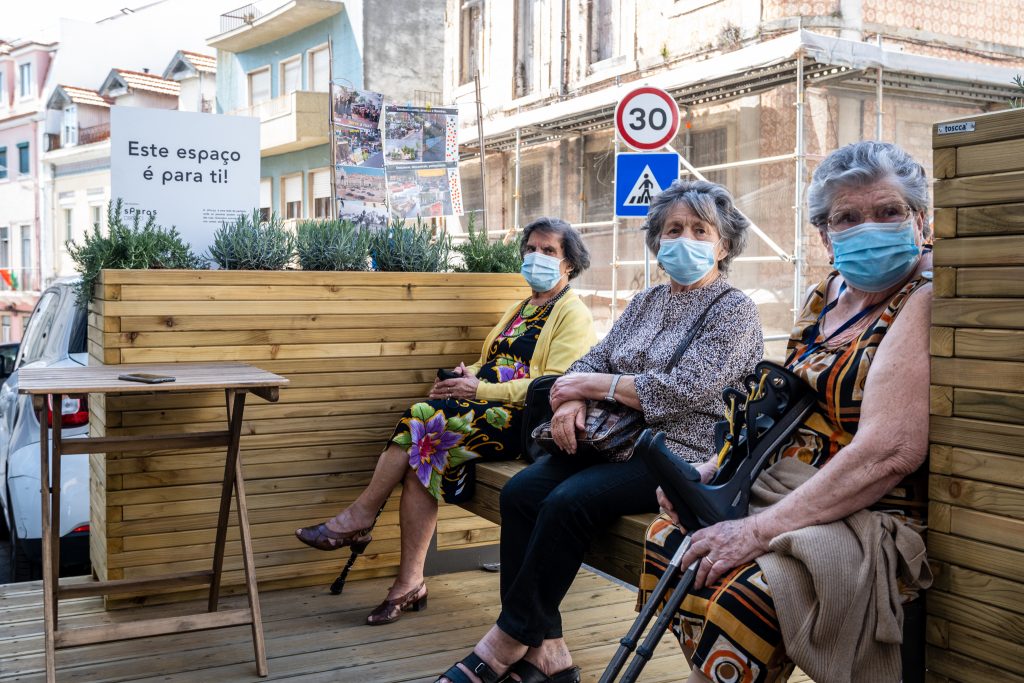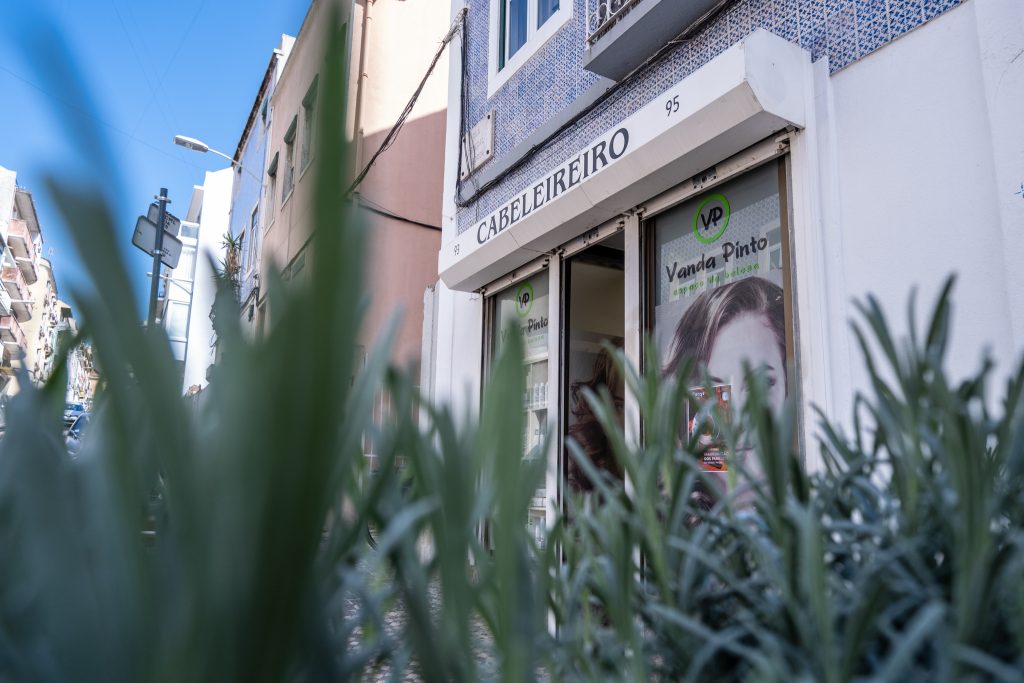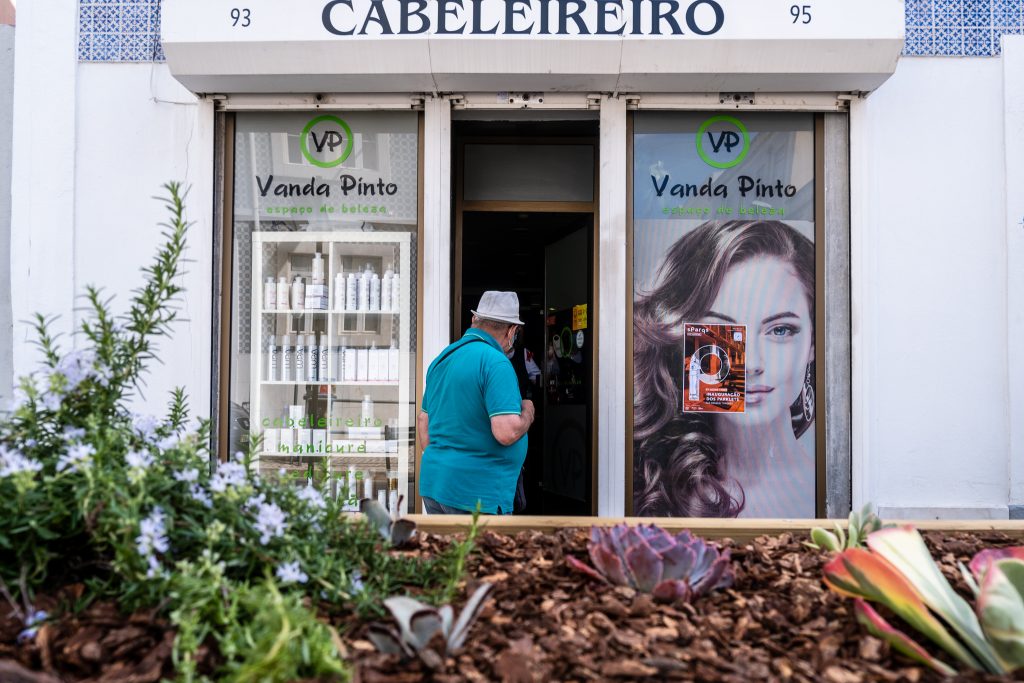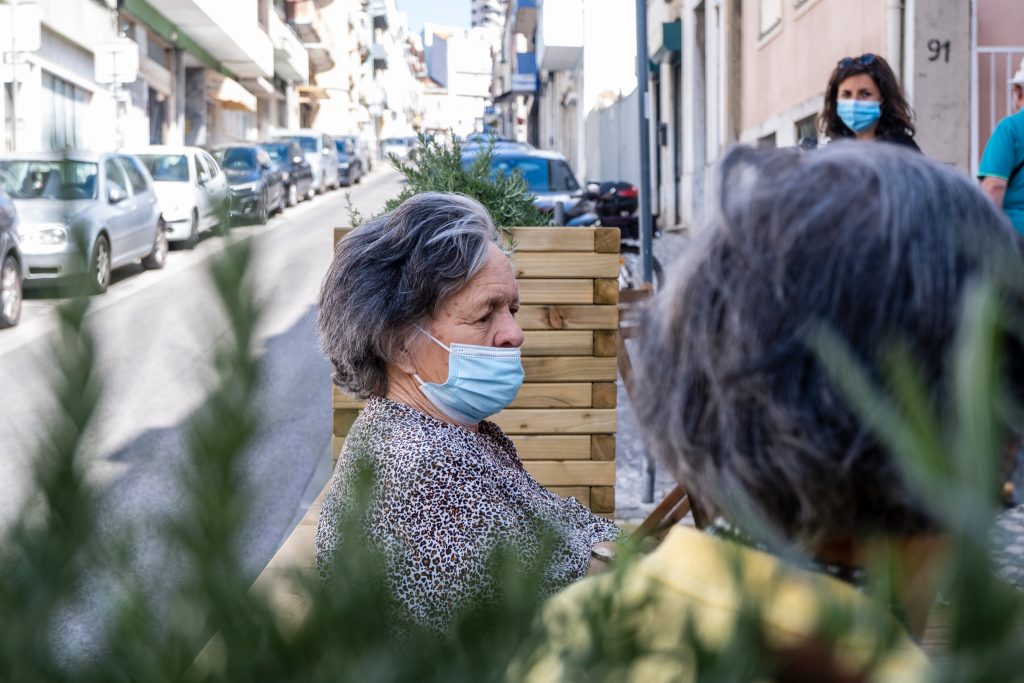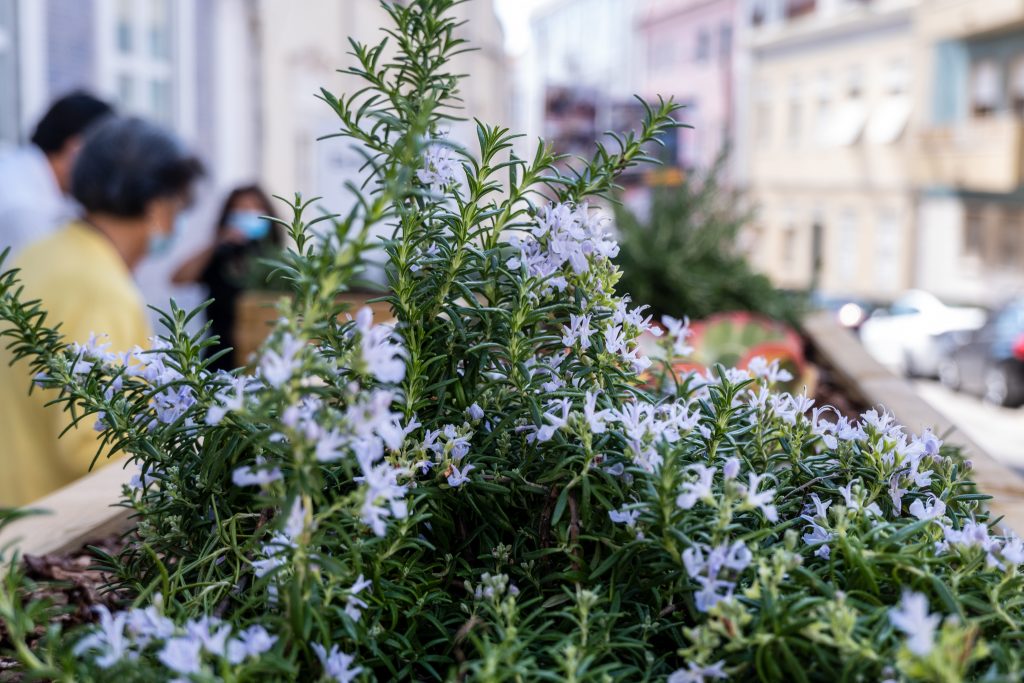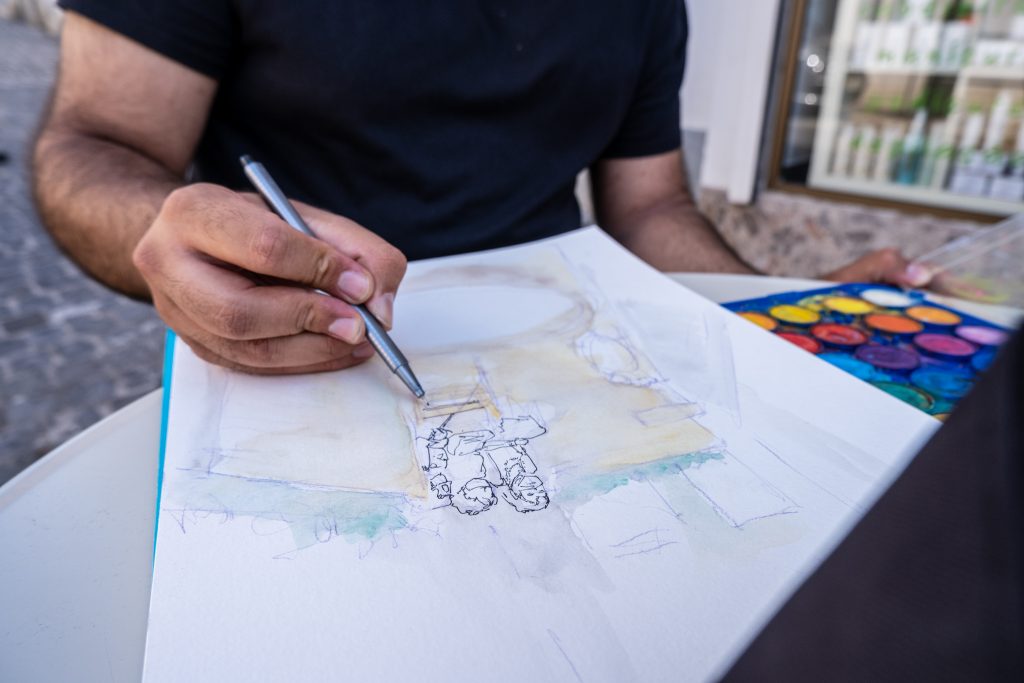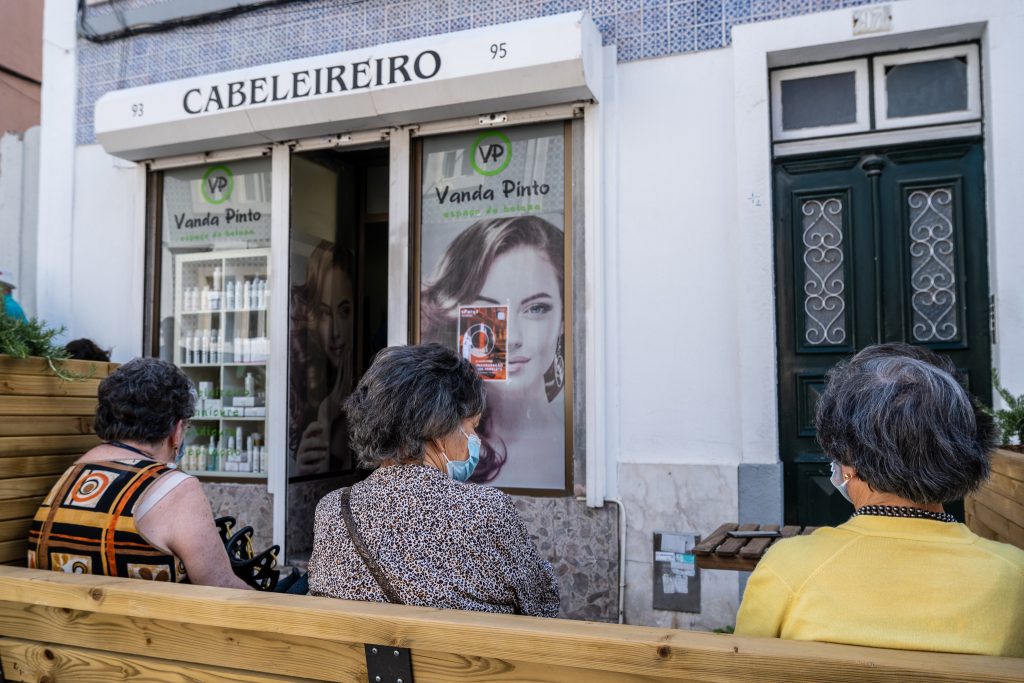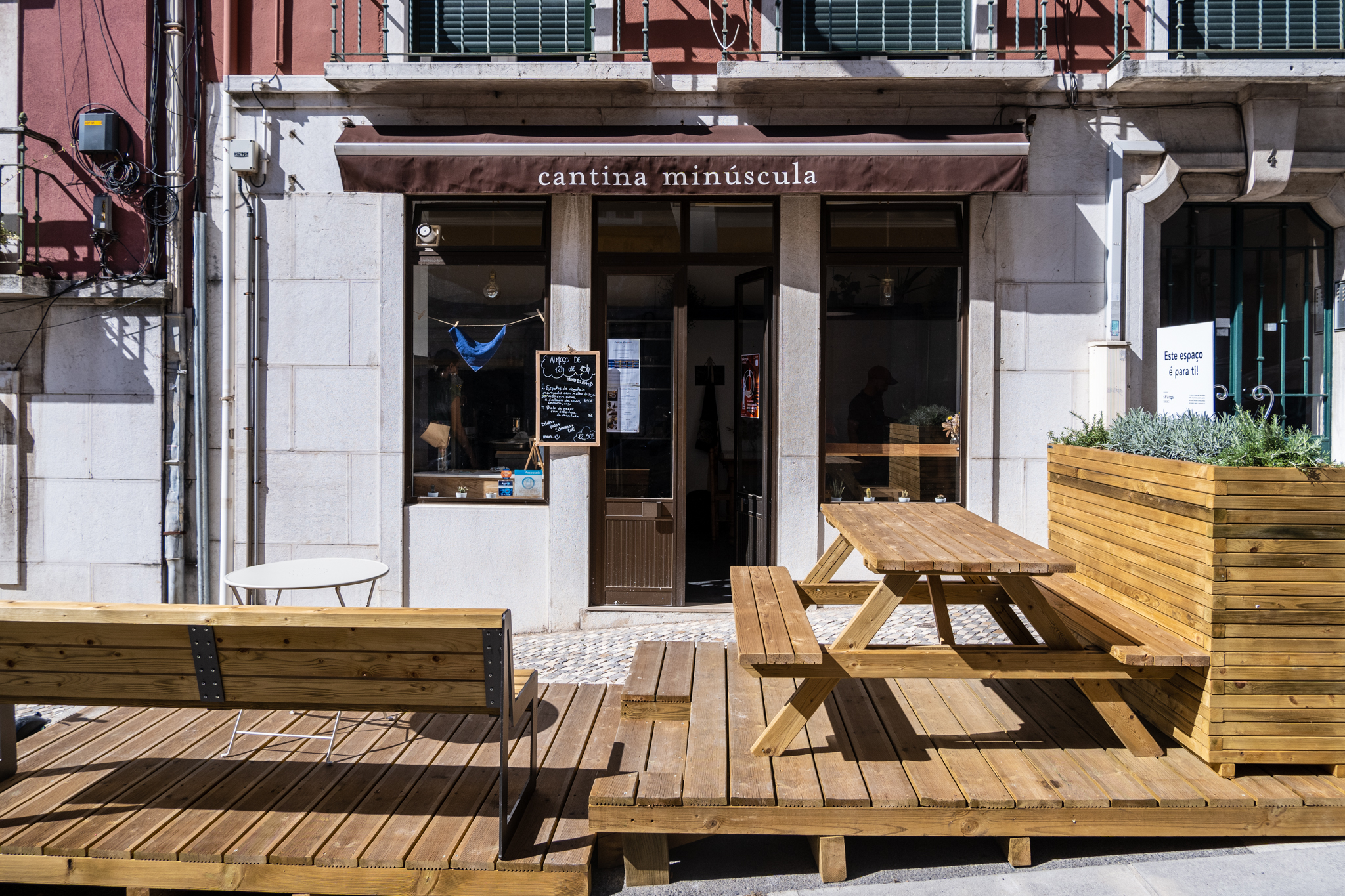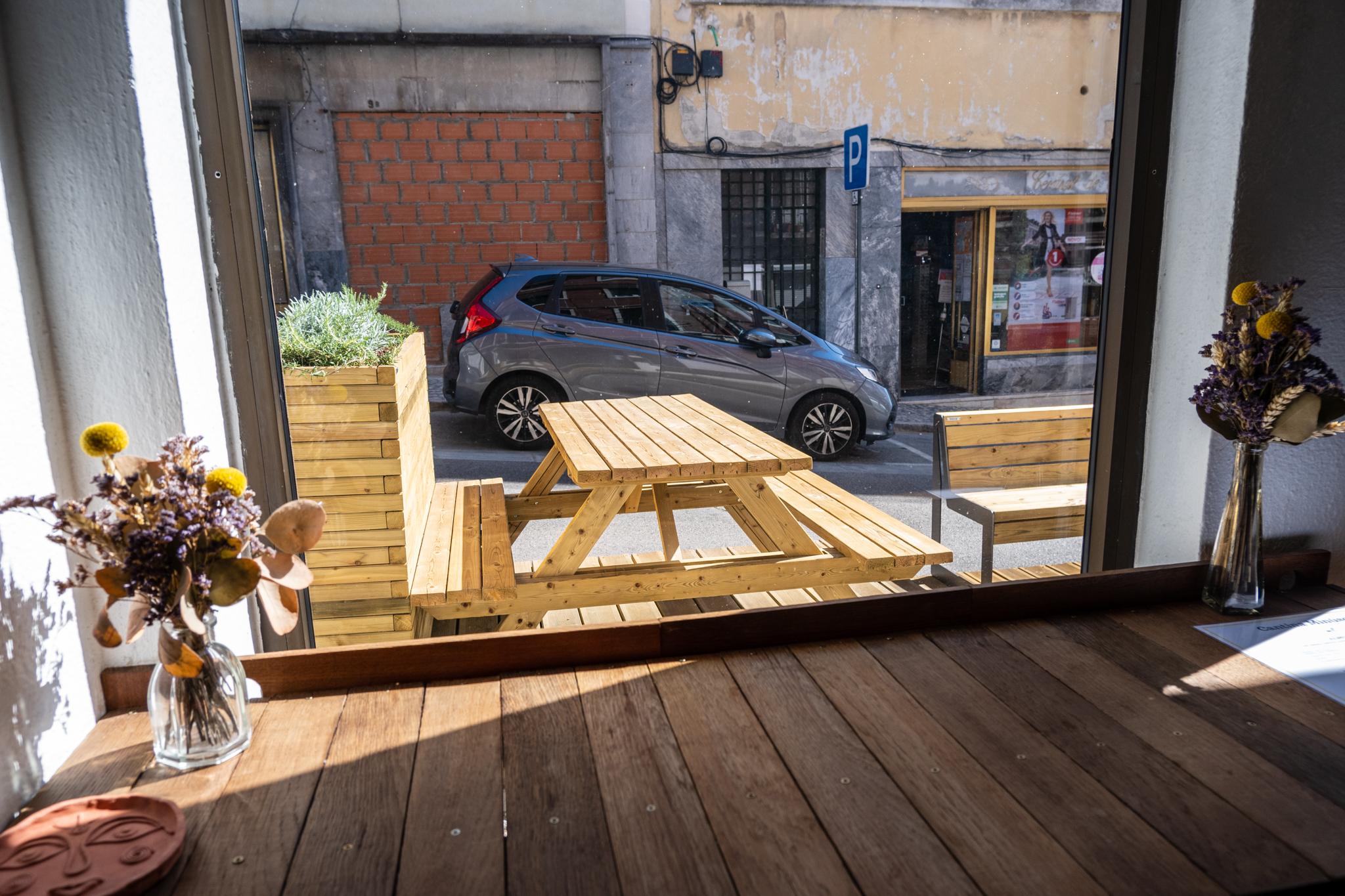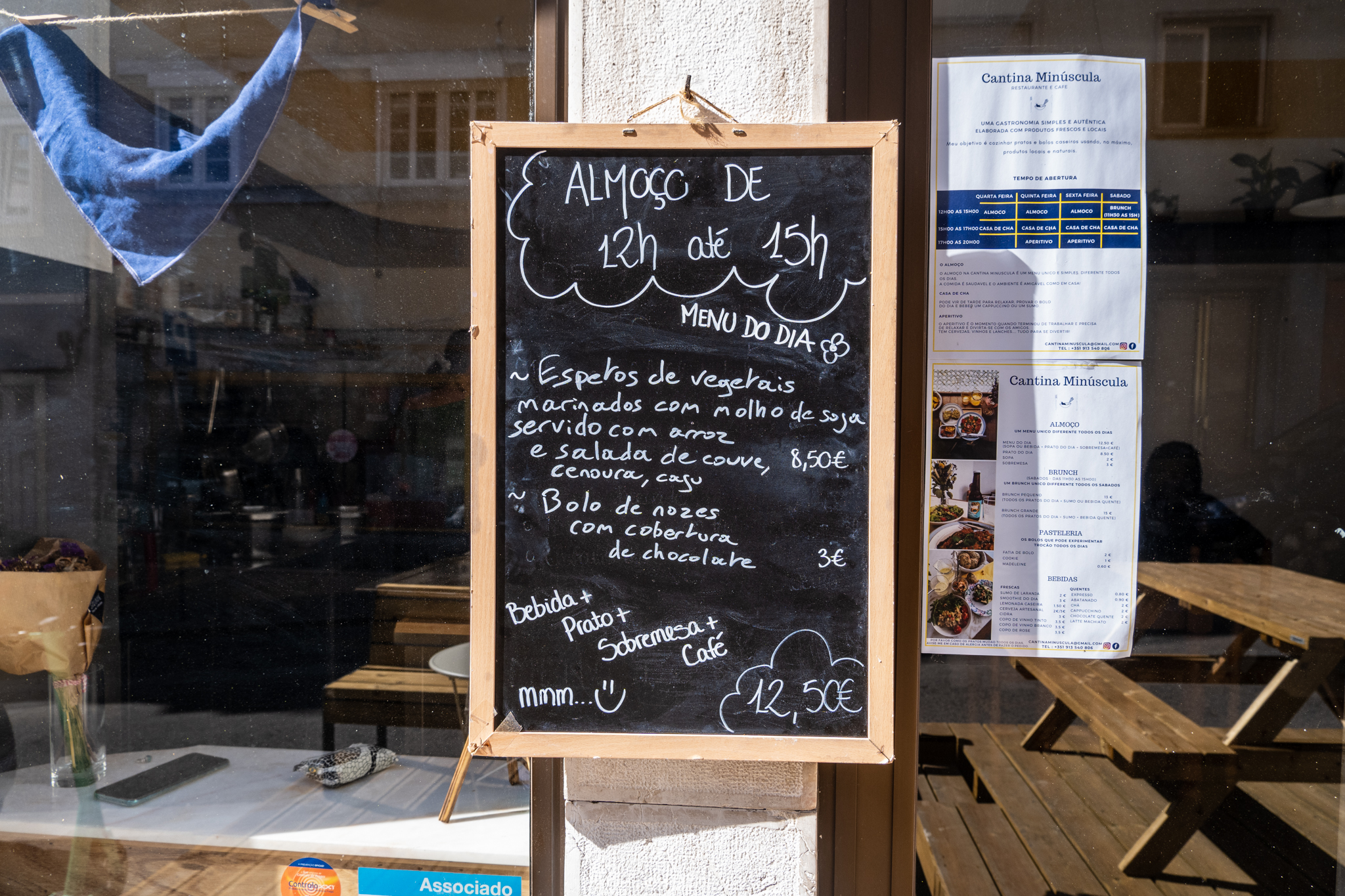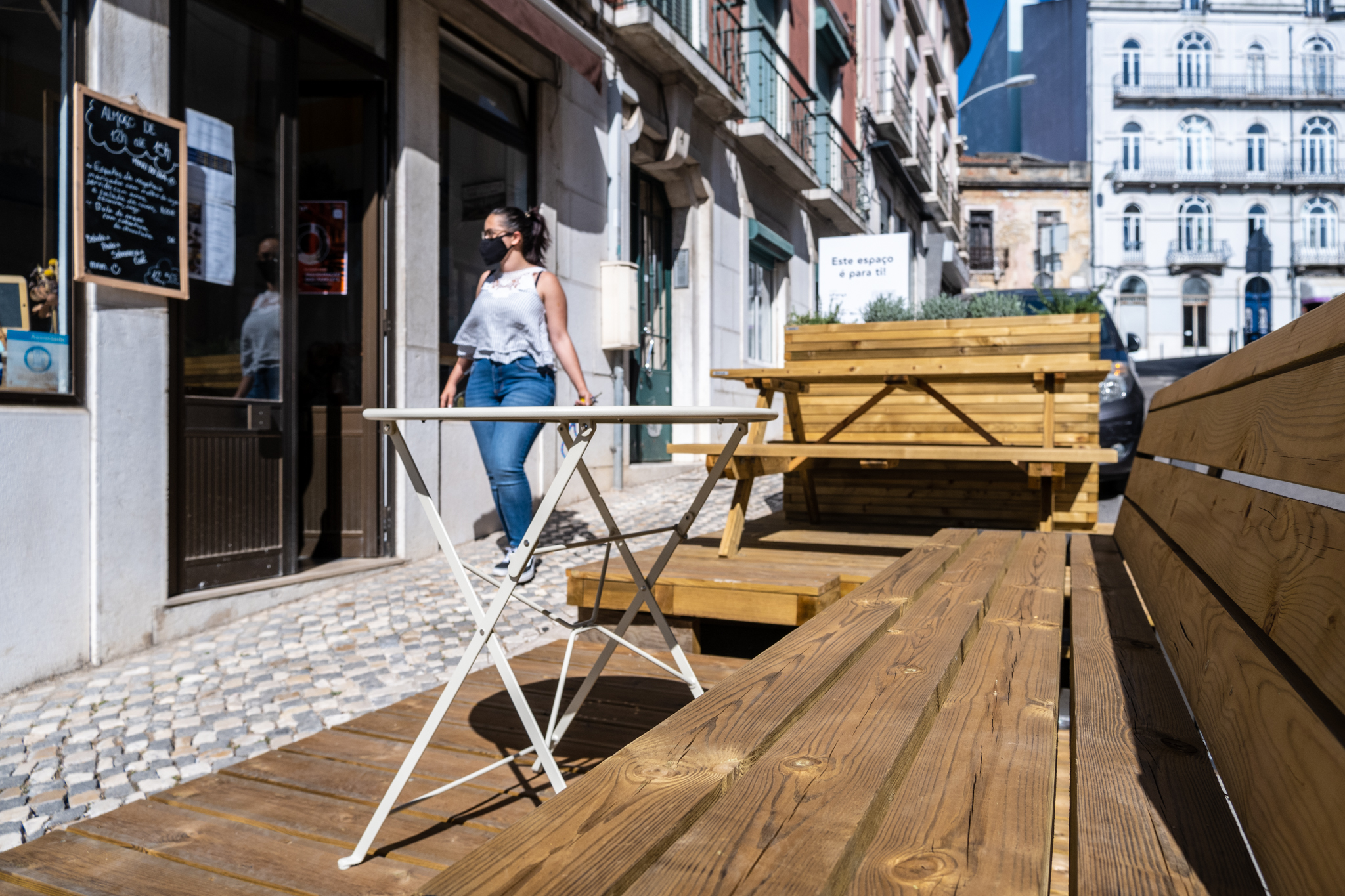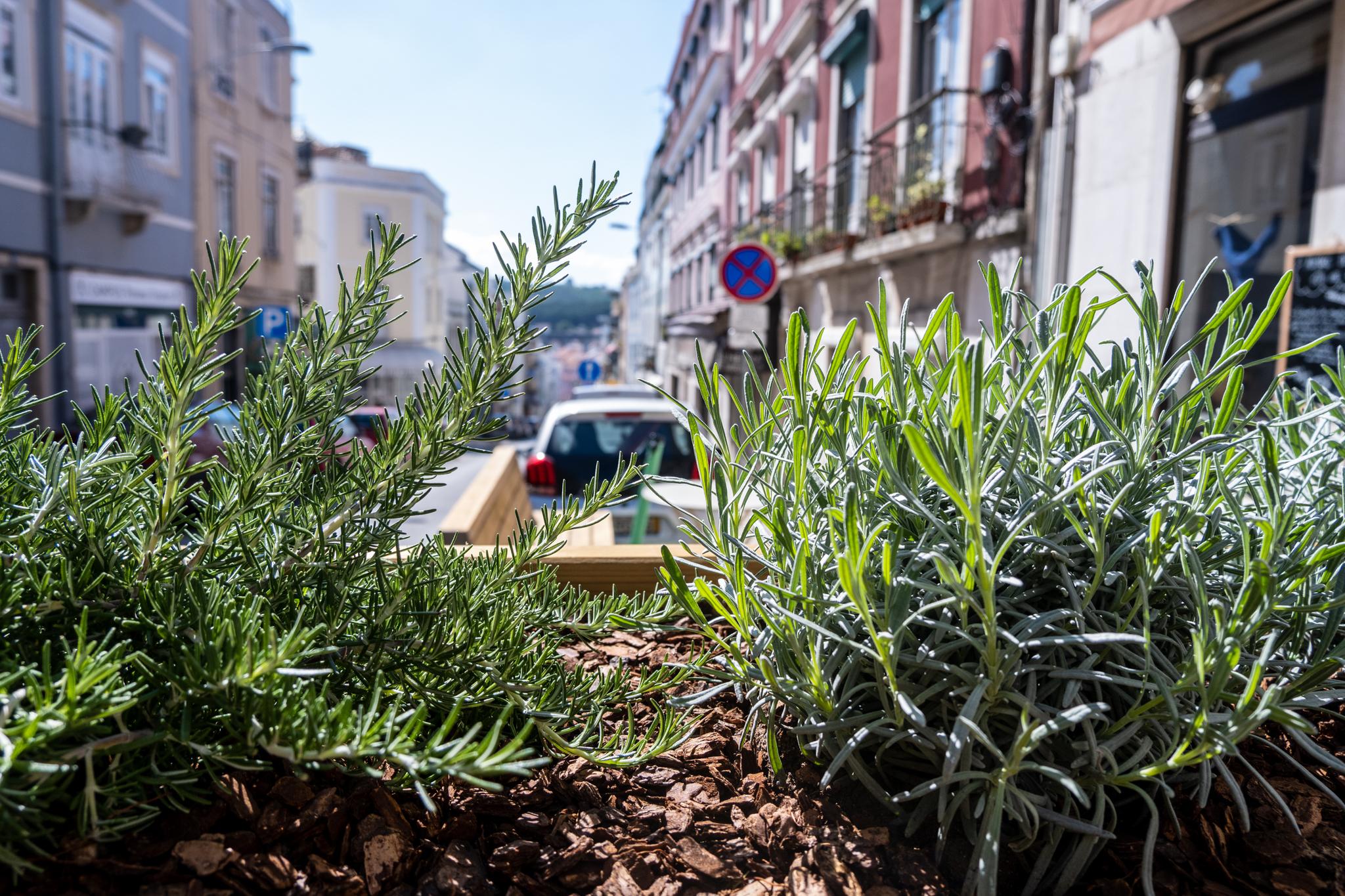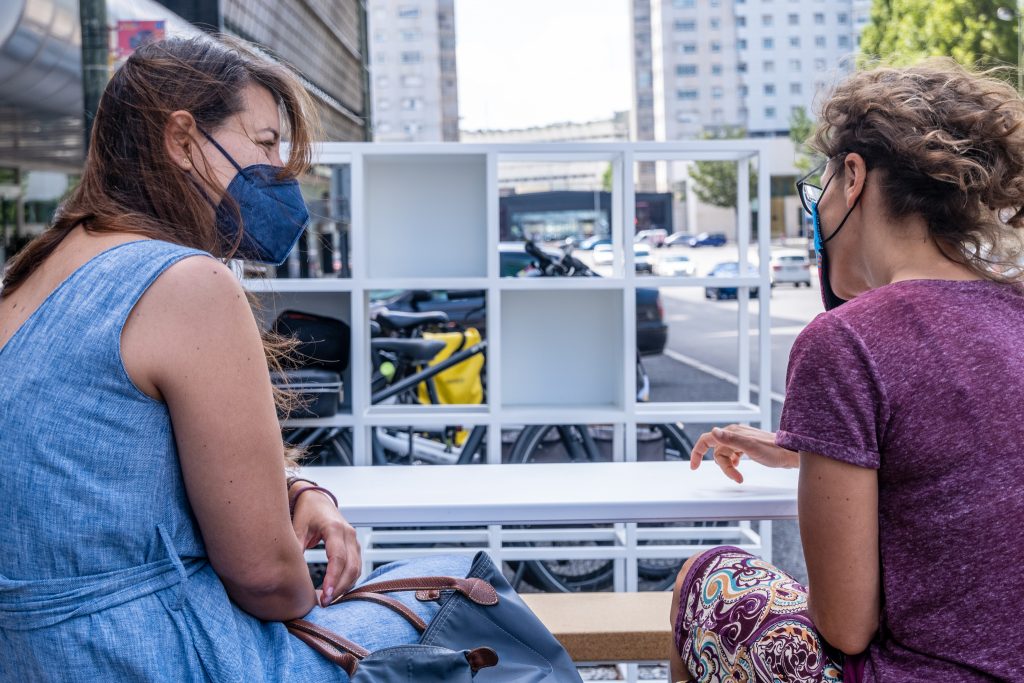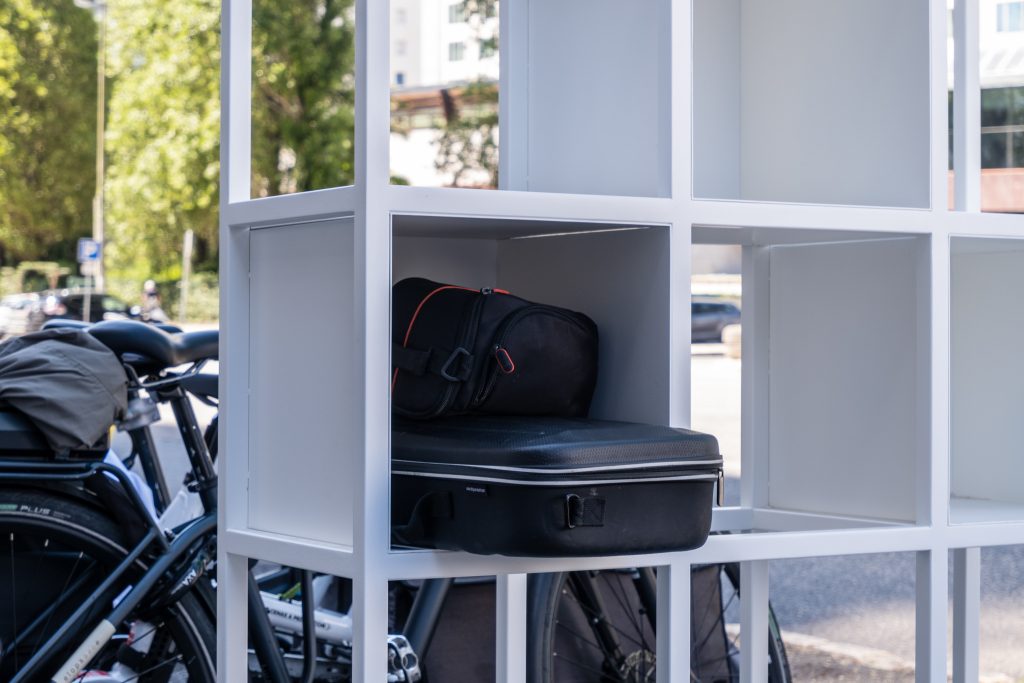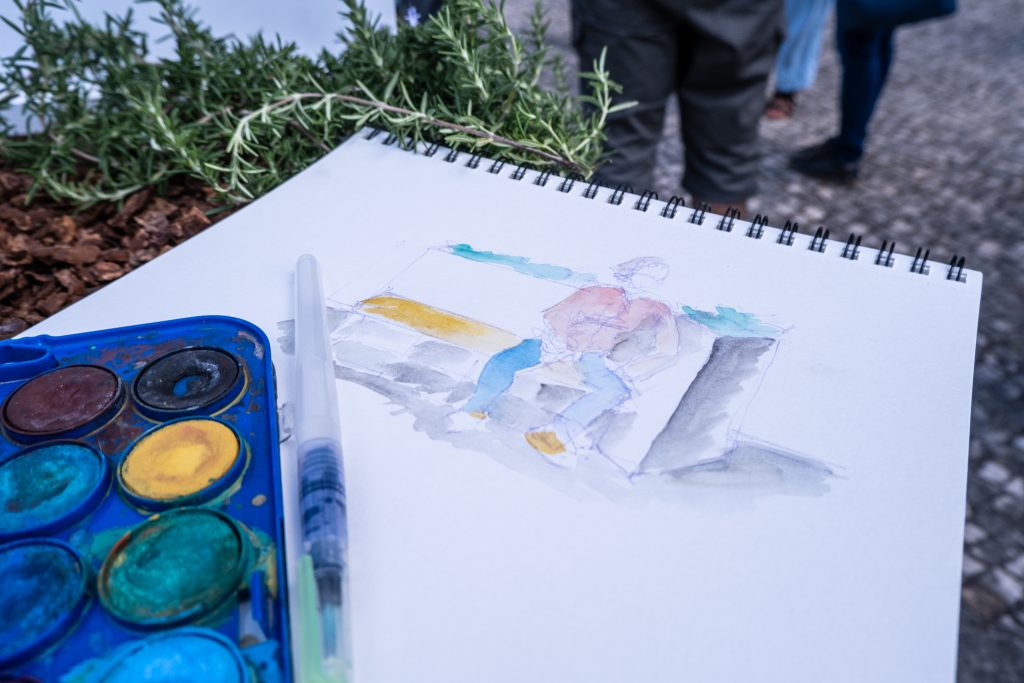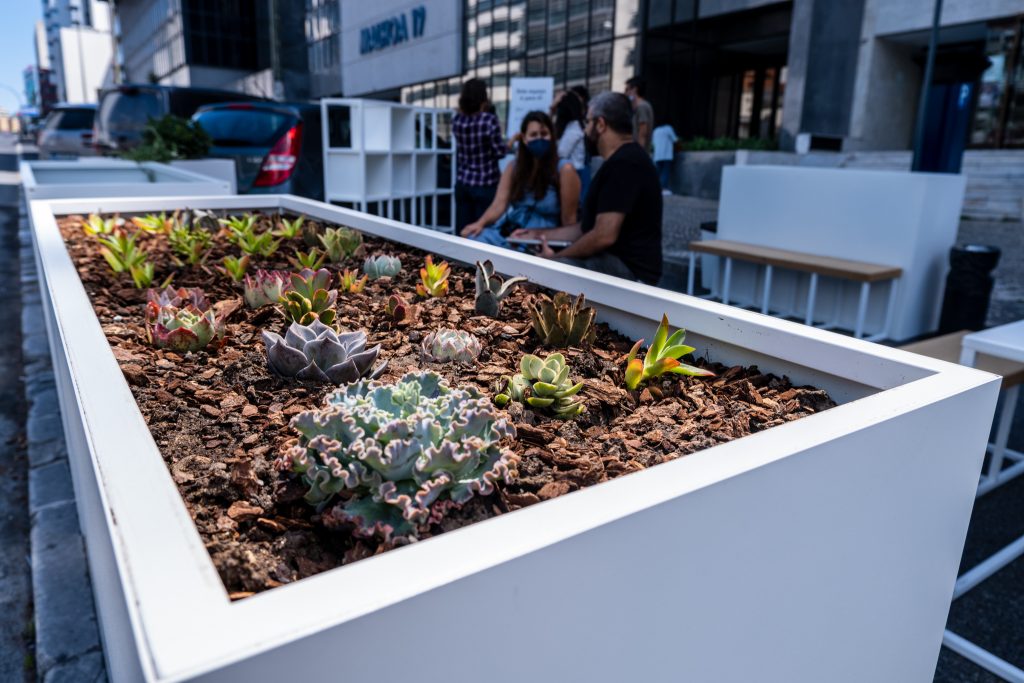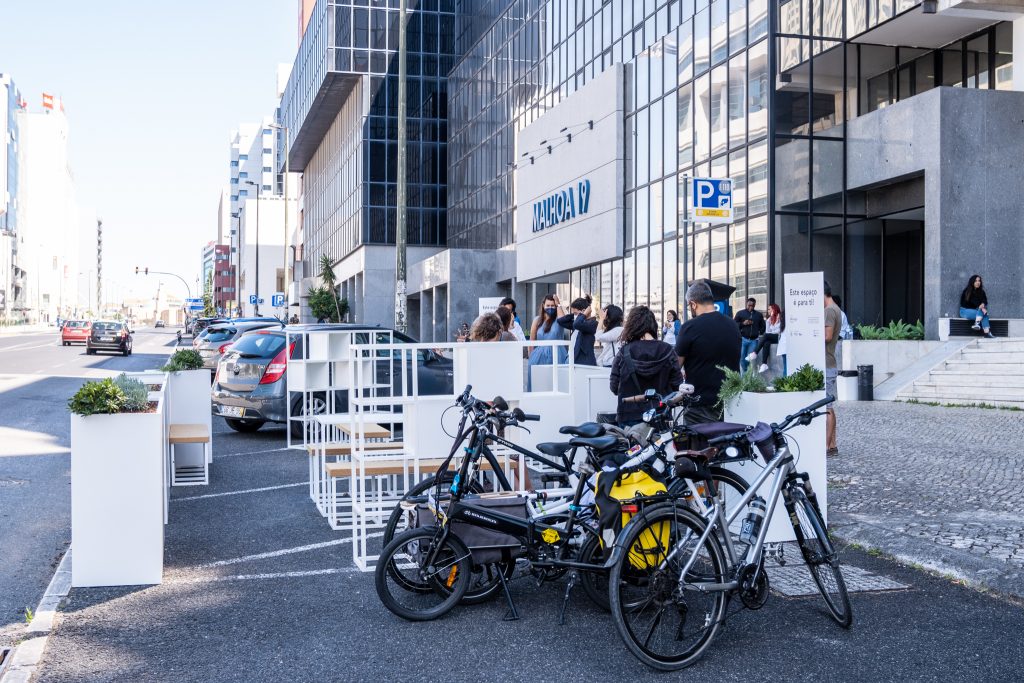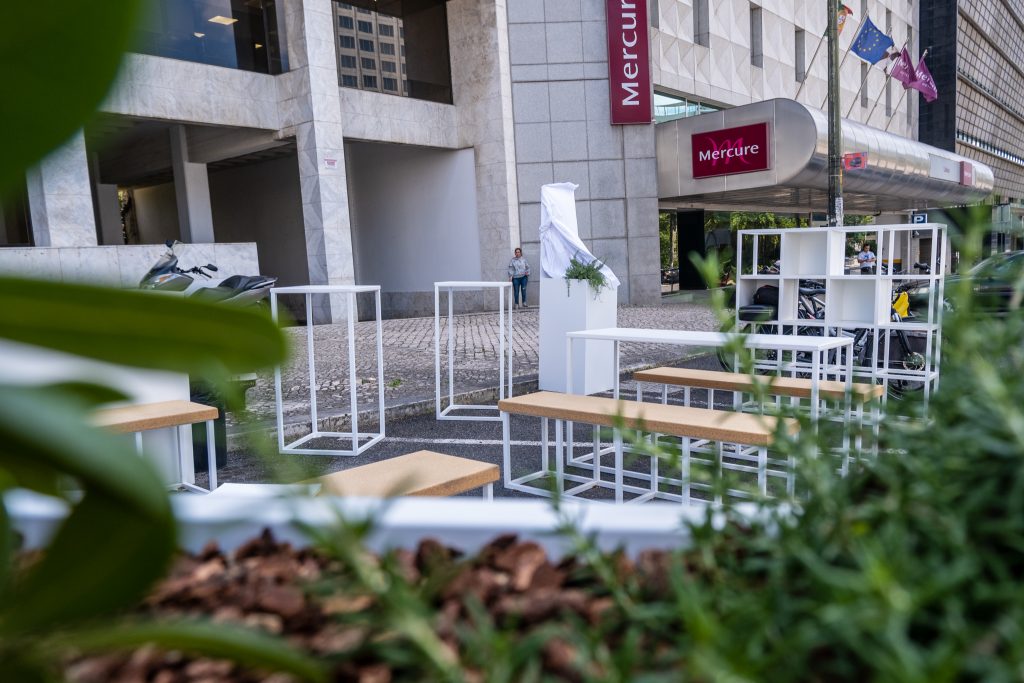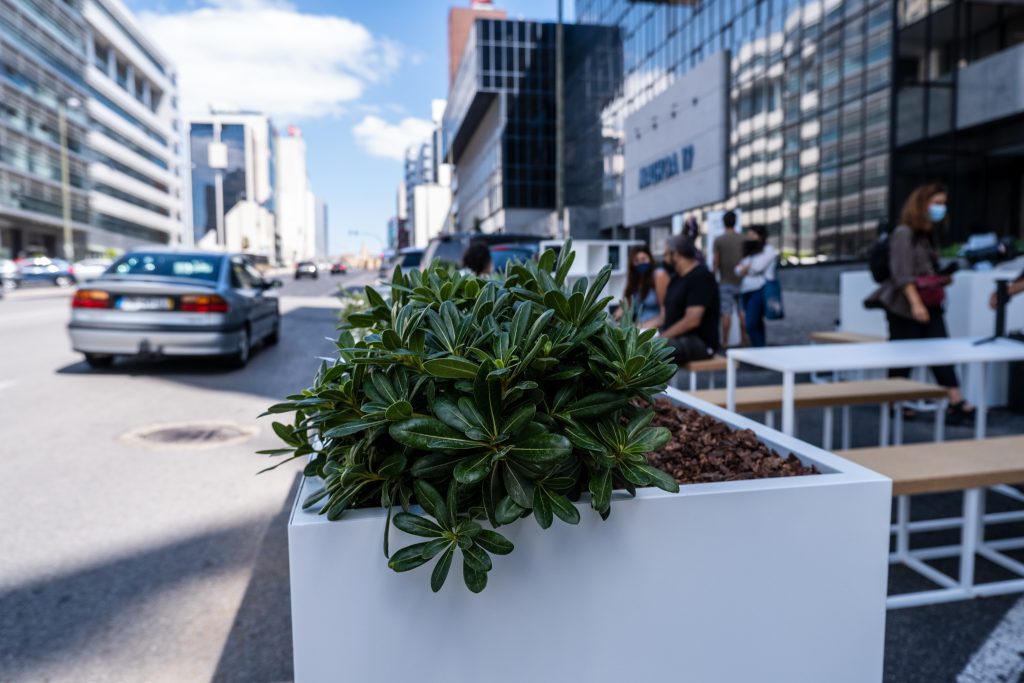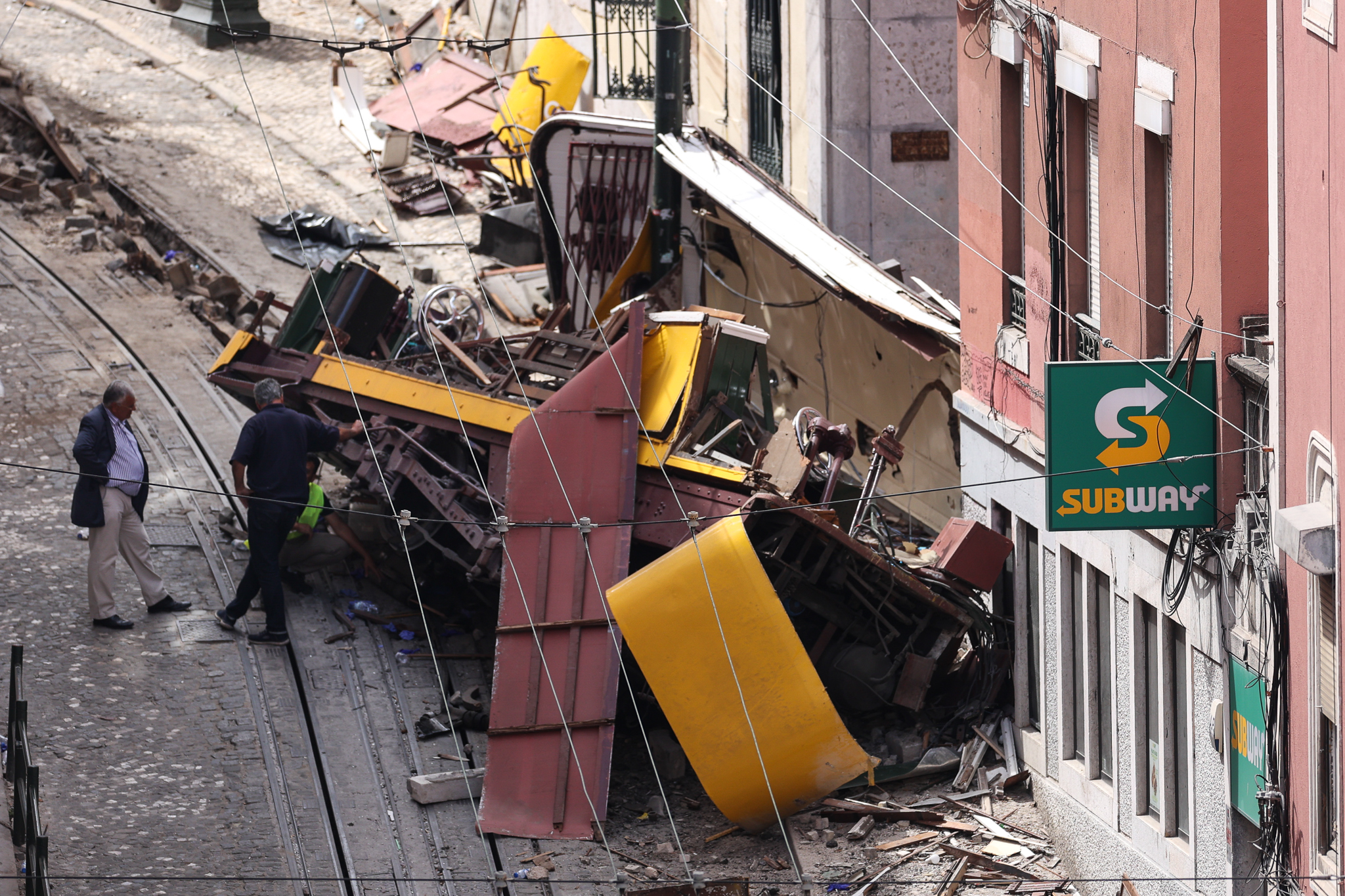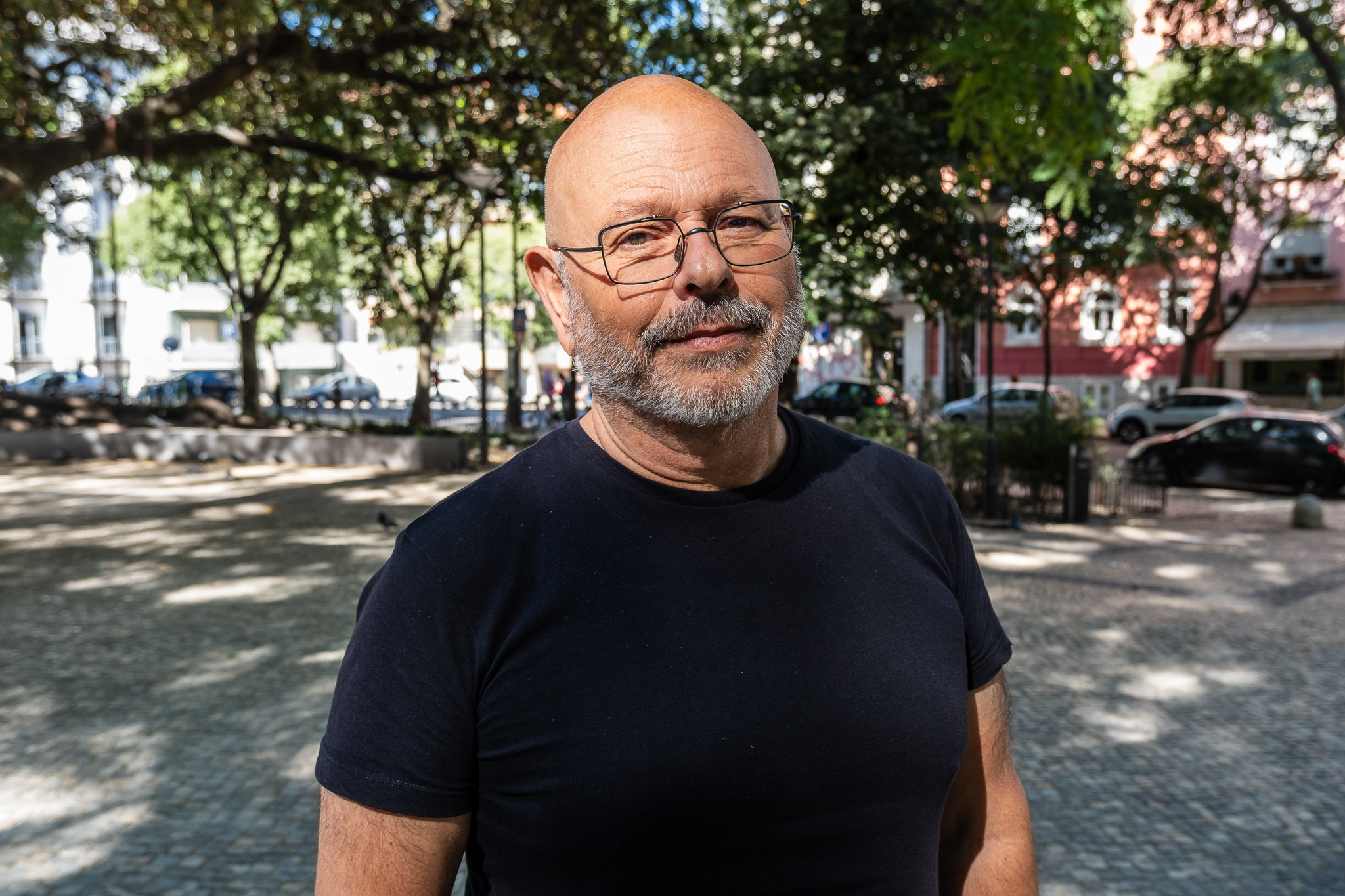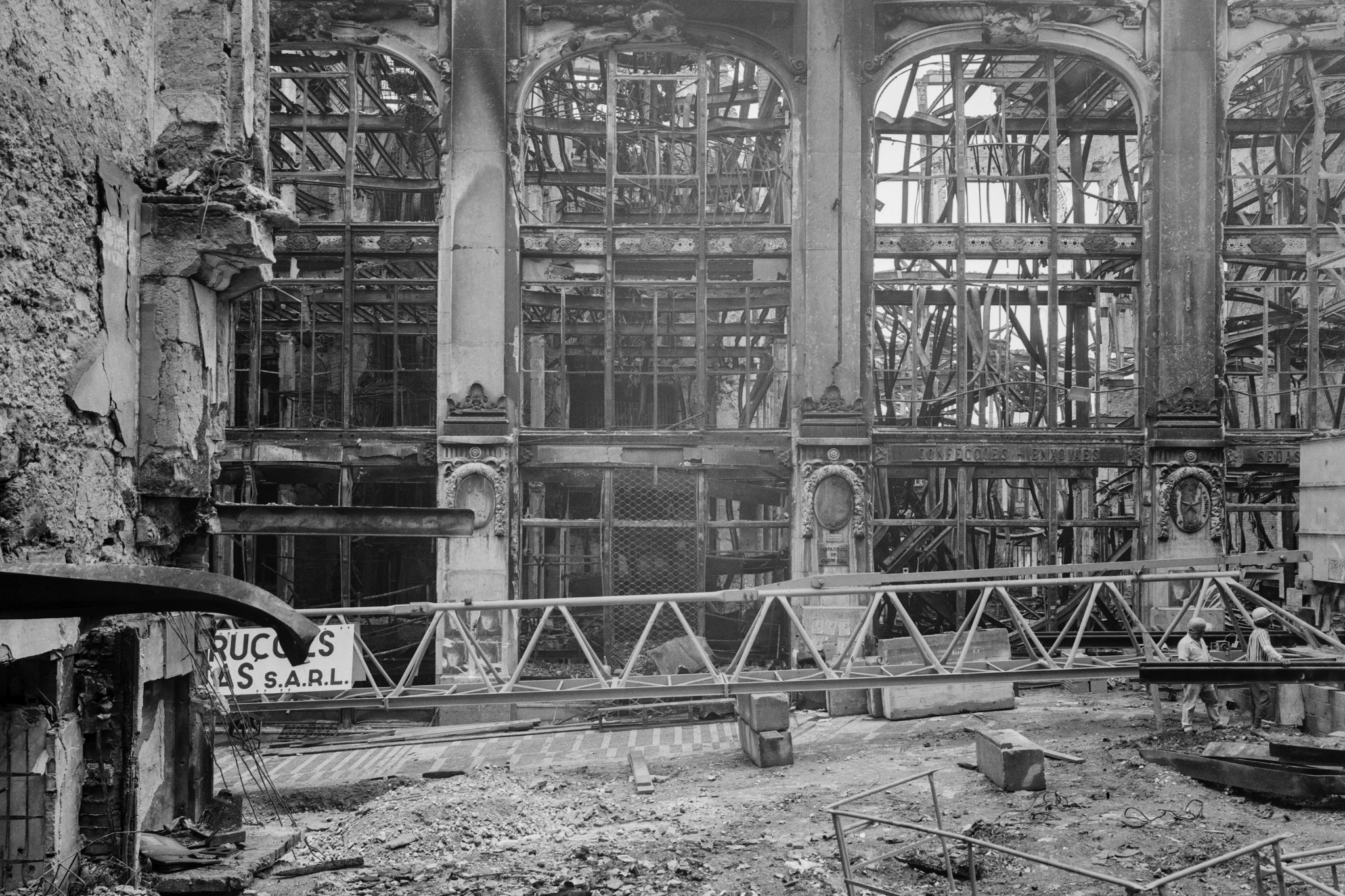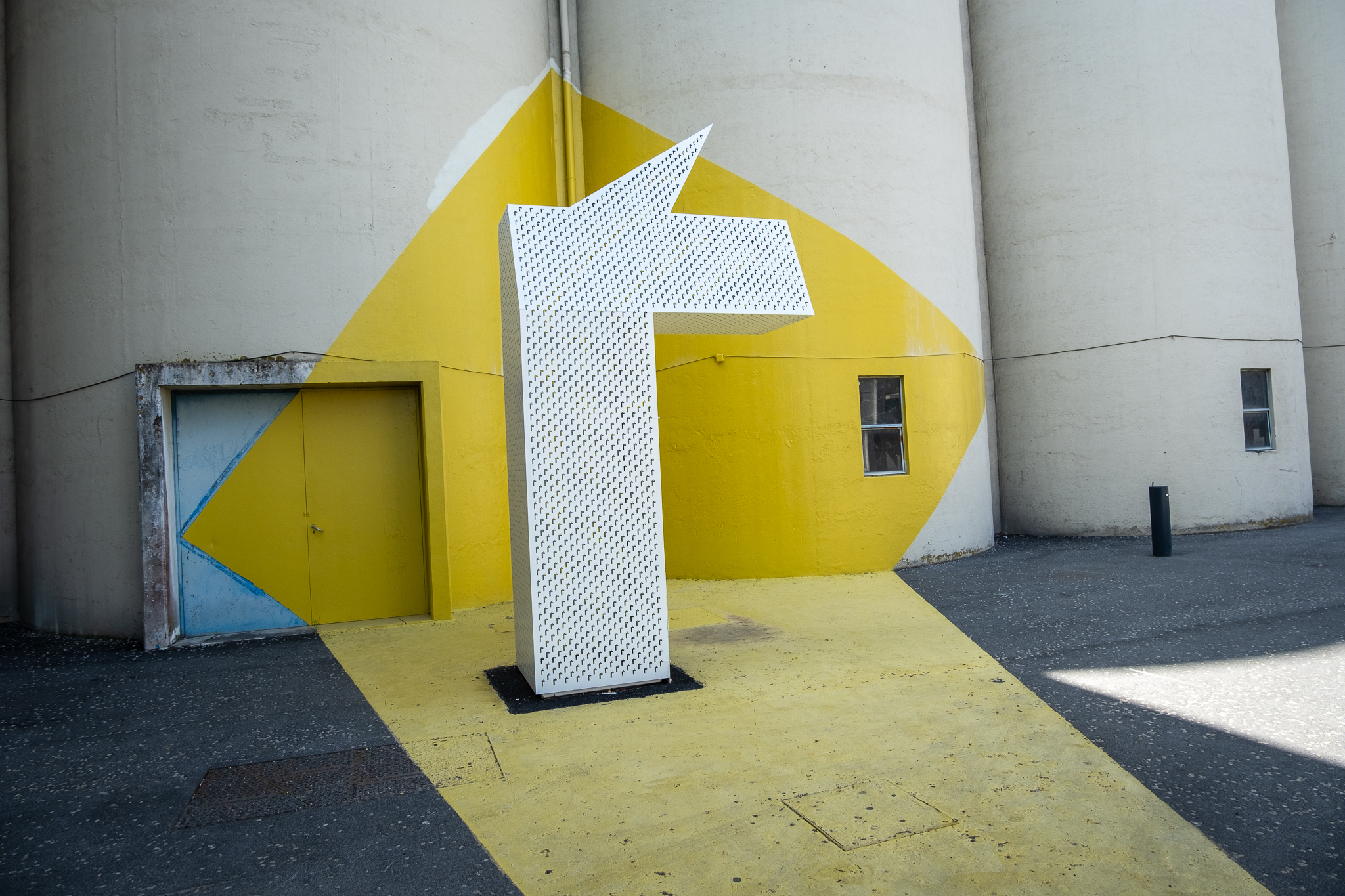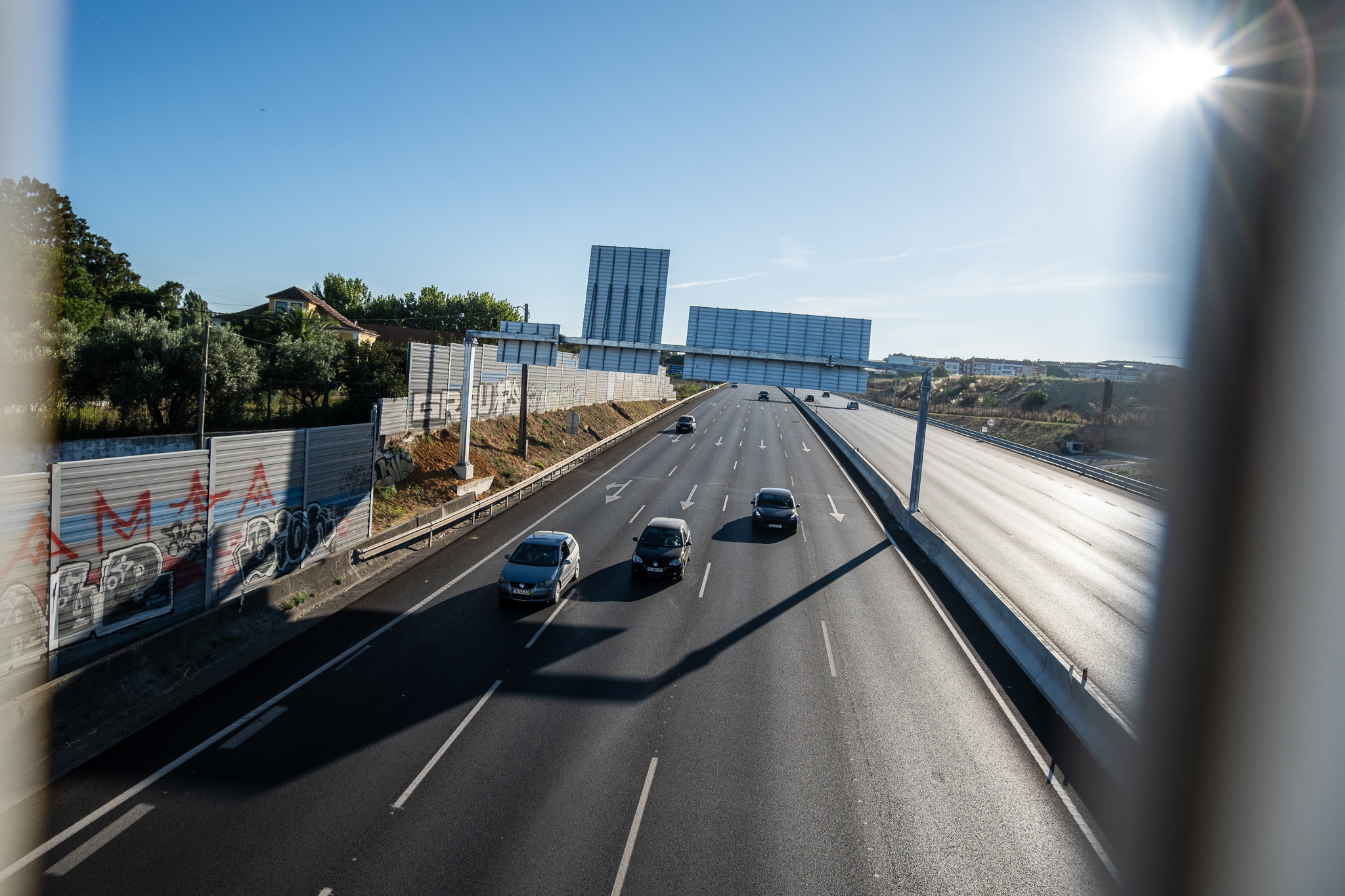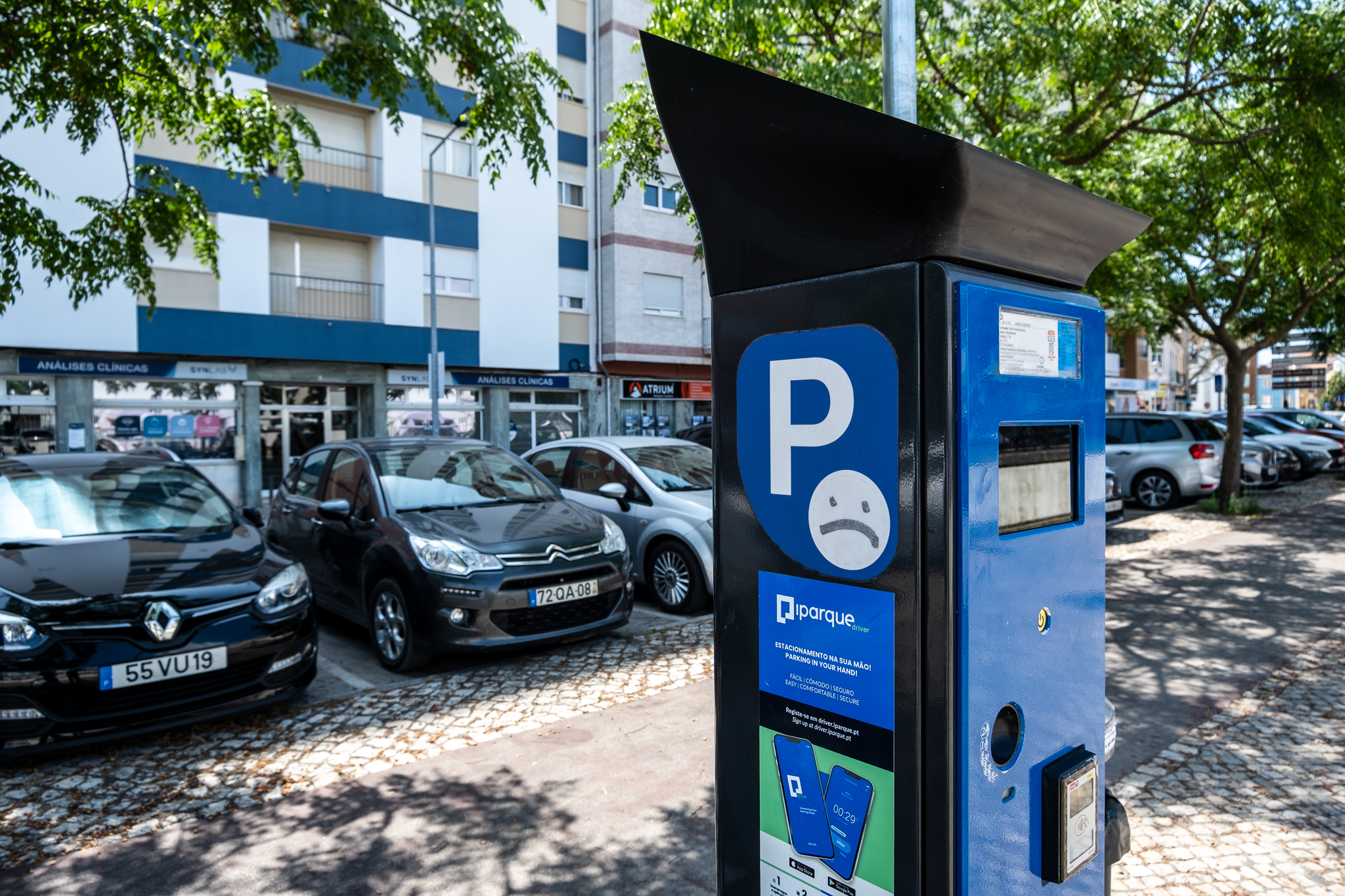
In a hair salon on Rua General Taborda, in Campolide, the clients keep arriving. Aurora, Maria and Edite have lived there longer than Dona Vanda has had the establishment and have visited it since the beginning. They are pleased with the wooden bench and the small patio that was put in front of the hairdresser's, in the space of a parking space. "At least here I always give a little bit to the tongue"Edite is tired of always being alone at home. She says that now she might go out more often to sit there, where she gets some shade.
Dona Vanda's hairdresser's is on a narrow neighborhood street that, despite this and its speed limit of 30 km/h, seems to be used for crossing traffic, such is the whirl of cars that don't stop there. It has parking on both sides, no trees, narrow sidewalks, and only one or two benches at an intersection at the top. It is a sloping street. For the three ladies, this parklet is great for when your life is up and down the street, and you need a little break in between. Edite gives the example of a couple who often watch from their window in the morning, first thing in the morning, and who often use the bench to rest their arms from the weight of the shopping bags.
A parklet - The term we used above - is a parking space converted into a public space that anyone can use. This parklet on Rua General Taborda (actually, there are two on that street, but we'll get to the second one) is one of the four that sParqs, an initiative of the Bicicultura cooperativeis installing in Campolide. João Bernardino, co-founder of the project along with Ana Pereiraexplains that contact was made with several Parish Councils and that Campolide was one of the most interested in becoming a partner.
sParqs has already worked with Junta de Freguesia de Arroios, having placed two parklets in the surroundings of the Marketand is planning with Beato's to install a parklet in front of a coworkNOW_Beato. The financing of each structure is provided in 70% by the Environmental Fund and the rest by the parish, but the idea of sParqs after these first seven parklets experimental is to bet on a commercial modelsParqs: businesses that want to humanize the parking space in front of them can contact sParqs and receive support in the design, licensing and installation of the parklet. Maintenance is then the responsibility of the establishment. All parklets assembled by sParqs become part of a network that is available online as a mapIt is a great way for anyone to find out where each one is, and to get to know different local businesses.
Of the four from Campolide, one is still missing parklet to set up, but its location has been chosen - it will be on Avenida Columbano Bordalo Pinheiro. The second one at General Taborda is in front of the Tiny Canteen, a restaurant that is really small and has seen its space this way. In this establishment run by Camille Bichindaritz, meals have been served outside since it opened about a year and a half ago, because inside there is hardly any room for the French immigrant to move around. Now, customers can eat at parkletIt has a garden table and a small patio where an additional table can be placed.
In fairness, the parklet placed in front of the Minuscule Canteen, just like the hairdresser's, does not belong to the establishments, although they are asked to maintain and make the spaces more dynamic, as well as to water the decorative plants. The parklets are public spaces, which everyone can enjoy, even if they are not customers. This message is difficult to get across, as João Bernardino confesses, because in the last few months we have witnessed the appearance of many esplanades in parking spaces around the city, and these esplanades belong to the establishments and not to the city - they are not "real". parkletsas João explains, resulting from private spaces that expand into the street. According to data from the municipality, between May 2020 and May this year about 300 terraces in parking spaces in the city.
The inauguration of these three of the four parklets of sParqs in Campolide took place this Wednesday with the presence of the architect who designed it, Bruno Maltezfounder of the atelier Square Panda and author of several cowork and work. Bruno ventured into this challenge with sParqs and, while symbolically unveiling the inauguration plaques, helped identify solutions to problems raised by the owners and first users of the parklets. In the one in front of the hairdresser's it was realized that more benches are needed because people come there essentially to sit and talk while waiting (or not) for the service in the hairdresser's. At parklet According to Camille, some families have already had lunch there for fear that the children could escape into the street. It also gets a lot of sun all day, so there was talk of finding a way to put up an awning or a hat. The complication, Bruno said, is just with the budget; they are already over it, but still, they will look for a way to make these improvements.
The locations for the parklets were decided between sParqs, the Junta and, of course, the merchants. There were several factors at play, such as parklet not take away parking in high pressure areas or have some social relationship with the local business in front of which it could be installed. On Avenida José Malhoa, an oversized artery for the traffic it has, along which offices and hotels are built, is the third parklet sParqs in Campolide, the first to be inaugurated this week. Unlike the ones on Rua General Taborda, a residential area, this one is located in front of a call-center company, the Konecta. João Bernardino tells us that the contact with this firm was not immediate but that they supported parkletwho occupy two oblique parking spaces, as soon as they saw it installed at their door. Konecta is in charge of cleaning and has provided a trash can and an ashtray for its employees to use the space properly. Here there are two tables for standing, five benches, a long table and several pieces of furniture that, according to Bruno, can be used to leave books and other objects for exchange. The idea, says the architect, was to create a dynamic and inviting open-plan living room here.
sParqs has been monitoring the parklets to evaluate its use and says that he has seen this one at José Malhoa being used - you could also tell that from the trash can. However, while we were there for the inauguration we noticed that employees were still gathering outside the building, in front of which there is a wide sidewalk. It is true that the parklet also had been occupied by "strangers" from one moment to the next, that the environment was very windy, and that several cars sometimes passed by at high speeds right next to the "living room" that Bruno had designed. At the entrance of the building one is more guarded, besides being a habit already ingrained in the employees who may not yet be familiar with the new space. Perhaps we also need to work on the Konecta side, either at the internal communication level, or at the dynamization of events in that parkletfor example. sParqs is optimistic, because these parkets are experimental and, if one doesn't go as well as expected, it can be moved to another location or adapted in the future. As with the other locations, the José Malhoa location also discussed ideas for improvements, such as painting the floor to disguise the asphalt and increase comfort.
The parklets have become a worldwide trend accelerated by the Covid-19 pandemic. In Lisbon, as mentioned above, about 300 parking spaces were converted into esplanades, as part of a measure taken by the local government to support local commerce and stimulate new uses for public space. Although these are private areas, they still allow the dynamization of neighborhood life, allowing groups of people to sit and eat, drink, and talk in a space where a private car would be parked with no one inside. The mission of sParqs is a little different - it is to propose new uses for parking spaces that can serve those who live, work, or live in the city and are looking for areas to sit, sit, talk, play... and what they find are streets cluttered with cars from one end to the other, often without any green feature (as was the case of Rua General Taborda). Vanda's hairdresser thanked parkletAurora, Maria and Edite, whose age has already cost them some travel and has pushed them towards solitude at home, as well.
